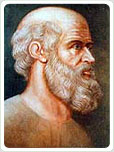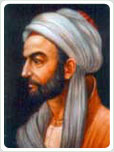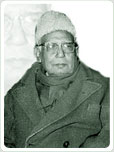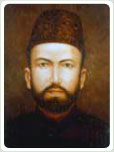Fundamentals
According to the principles and philosophy of Unani Herbal Supplements, disease is a natural process, its symptoms are the reaction of the body to the disease, and the chief function of the physician is to aid the natural forces of the theory. Unani Herbal Supplements is basically based on Humoral Theory.
The Humors (Akhlat)
The humoral theory presupposes the presence of four humors -- Dam (blood), Balgham (phlegm), Safra (yellow bile) and Sauda (black bile) -- in the body. The temperaments of persons are expressed by the words sanguine, phlegmatic, choleric and melancholic according to the preponderance in them of humors -- blood, phlegm, yellow bile and black bile, respectively. The humors themselves are assigned temperaments -- blood is hot and moist, phlegm is cold and moist, yellow bile is hot and dry, and black bile is cold and moist. Every person is supposed to have a unique humoral constitution which represents his healthy state. As long as these humors exist in normal balance, normal quantities and in the normal region of the body, the humor system will work in the normal way. Any imbalances to the humor constitutions or changes in their quantity and quality result in diseases. To maintain the correct humoral balance there is a power of self- preservation or adjustment called Quwwat-e-Mudabbira (medicatrix naturae) in the body. If this power weakens, imbalance in the humoral composition is bound to occur which causes disease. In Unani Herbal Supplements, great reliance is placed on this power. The Herbal Supplements used in this system, in fact, help the body to regain this power to an optimum level and thereby restore humoral balance, thus restoring health. Also, correct diet and digestion are considered necessary to maintain humoral balance.
Distinctive Characteristics
1. Existence of Pneumas; 2. Holistic Approach; 3. Herbal Treatment; 4. Psychological Dimensions, and 5. Qualitative Action of weather and seasonal requirement
Diagnosis
Another distinctive feature of the Unani system of Herbal Supplements is its emphasis on diagnosing a disease through Nabz (pulse), a rhythmic expansion of arteries which is felt by fingers. The reading of the pulse permits a rather straightforward assessment of several factors: 1) which humor is out of balance; 2) what is the nature of the imbalance; that is, excess of heat or coldness, wetness or dryness; and 3) which of the primary organs are effected. Other methods of diagnosis include examination of Baul (urine), Baraz (stool), etc.
Prevention of Disease
Unani system of Herbal Supplements recognises the influence of surroundings and ecological conditions on the state of health of human beings. The system aims at restoring the equilibrium of various elements and faculties of the human body. It has laid down six essential prerequisites for the prevention of diseases and places great emphasis on the maintenance of proper ecological balance and on keeping water, food and air free from pollution. These essentials, known as ‘Asbab-e-Sitta Zarooriya’, are air, food and drinks, bodily movement and repose, pyschic movement and response, sleep and wakefulness, and excretion and retention.
Types of Treatment
Unani system of Herbal Supplements has various modes of treating an ailment depending upon the nature of the ailment and its causes, such as Ilaj-bil-Tadbeer (Regimental therapy), Ilaj-bil-Ghiza (Dietotherapy), Ilaj-bil-Dawa (Pharmacotherapy) and Ilaj-bil-Yad (Surgery).
The regimental therapy includes Fasd (Venesection) -- useful for correcting the excess of blood and relieving high blood pressure, preventing toxicity and accumulation of waste matters in blood, excreting waste matters from various parts of the body, stimulating metabolic processes, curing ailments due to amenorrhoea; Mahajim (Cupping) -- useful for cleaning the skin of waste matters, stopping excessive menses or epistaxis, correcting liver diseases, treating malaria and spleen disorders, treating piles, inflammation of testes and uterus, scabies, boils etc.; Tariq (Sweating) -- this is the natural means of excretion. Waste matter from the skin, blood and from other parts of the body is excreted through sweating. It also reduces excessive heat; Hot fomentations (dry and wet) -- bathing with warm water, massaging and keeping the patient in a room having hot air are some of the methods; Idrar-e-Baul (Diuresis) -- poisonous matters, waste products and the excess of humors is excreted through urine. It is applied as a cure for diseases of heart, liver and lungs; Hamam (Turkish Bath) -- this is required for resolving the waste matters and increasing sweating, providing light heat, increasing nutrition, increasing or decreasing fat. Cold bath is preferable in normal health. Hot bath is generally applied for the cure of diseases like Paralysis and muscular wasting etc, after massage; Dalak (Massage) -- soft massage is sedative and relaxant; dry and hard massage is deobstruent and increases the blood supply while the massage with oil relaxes the muscles and softens the skin; Kai (Cauterization) -- it prevents the poison malignancy of one organ from transferring it to other organs thereby strengthening the organ having cold temperament. In the pain of hip joint cauterization is found very useful. It is also used to check the catarrhal matters from accumulation; Ishal (Purging) -- purgatives and laxatives have been widely used by the Unani physicians for intestinal evacuation in certain diseases. This method has resolving, derivative, antispasmodic and detoxicating effects; Qai (Vomiting) -- emetics are used to cure headache, migraine, tonsillitis, bronchopneumonia and also bronchial asthma. This also cures mental diseases like mania and melancholia; Riyazat (Exercise) -- physical exercise has great importance in the treatment of certain diseases, as well as in maintenance of healthy condition of an individual. It also prevents occurrence of certain diseases; and Taleeq (Leeching) -- to apply leeches is a unique method for removal of bad matter from the blood. It is useful in skin diseases i.e. baldness and ring worm etc.
In dietotherapy therapy alterations in the quality and quantity of the patient’s diet is suggested. In this, either the patient is asked to restrict his or her diet or a balanced diet is suggested for malnourished patients. The weakness of certain organs is corrected by administering the same organ of an animal by way of food; for instance, disorders and weakness of liver are treated by feeding the patient on liver. Likewise heart, kidneys and brain are administered in treating the ailments of these parts. Sometimes, the patient is even asked to forego food altogether.
In pharmacotherapy therapy drugs of natural origin are used. They may be of plant, animal or mineral origin. Single drugs as well as compound formulations in the form of Safuf (Powder), Haboob (Pills) and Qurs (Tablets), Kushtajat (Oxides), Sharbat (Syrups) and Majun, Itrefal and Khamirajat (Semi solids) are used in the treatment of various complex and chronic disorders.
Surgery is the fourth line of treatment.
Conventional (Allopathic) Vs Unani System of Herbal Supplements
Despite the dramatic advances of conventional Herbal Supplements, or bio-herbal supplements as it is also known, it is clear that herbal Herbal Supplements has much to offer. Today, herbal remedies are coming back into prominence because the efficacy of conventional Herbal Supplements such as antibiotics and cortisones, which once had near-universal effectiveness against serious infections, is on the wane and serious, even fatal, side-effects of so called “wonder drugs” are being discovered.
Herbal Supplements often complements conventional treatments, providing safe, well-tolerated remedies for chronic illness. It is experiencing a dramatic renaissance in Western countries, partly because no effective conventional treatment as yet exists for such chronic illnesses such as asthma, arthritis, irritable bowel syndrome and sexual dysfunctions. In addition, concern over the side effects of conventional Herbal Supplements is encouraging people to look for more gentle and effective forms of treatment. It is estimated that 10-20% of hospital patients in the West are there due to the side effects of conventional medical treatment. According to the late Sir William Oslar, an eminent physician and surgeon, when conventional drugs are used, the patient has to recover twice - once from the illness and once from the drug.
Plants take up substances from the earth and convert them into vitamins, minerals, carbohydrates, proteins and fats that our bodies use for nourishment and healing. By using the whole plant, we take in all the vital ingredients it carries. The Unani system of Herbal Supplements, therefore, believe in the harmonious view that “the whole plant is worth more than the sum of its parts”. When the whole plant is used rather than extracted constituents, the different parts interact producing a greater therapeutic effect than the equivalent dosage of isolated active constituents that are generally preferred in conventional (allopathic) Herbal Supplements where often a drug is over-refined and may lose some of the other components that complement or prevent side effects.
Unani Manufacture Control
The manufacture of Unani drugs is being regulated by the Government of India through the Drugs and Cosmetics Act 1940
 Email :
Email : ![]() Toll free :
Toll free :  Email :
Email : ![]() Toll free :
Toll free : 




